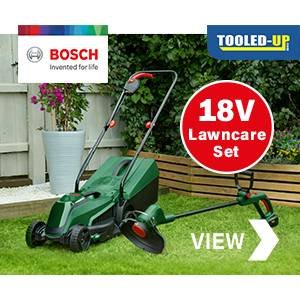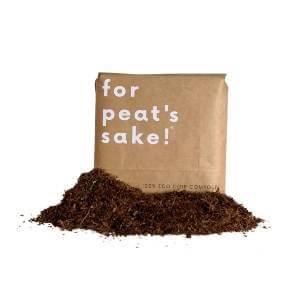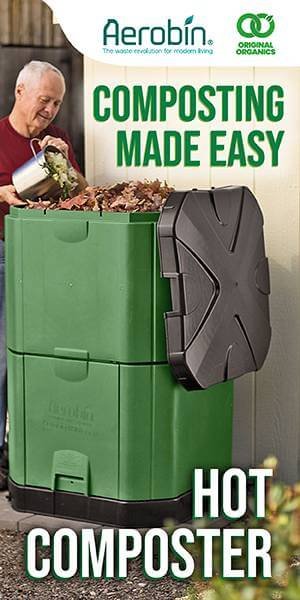Table of Contents
Cultivating Tomatoes: Indoors, Outdoors, and in Greenhouses
Tomatoes are the crown jewels of the garden, their vibrant fruits embodying the essence of summer. Gardening enthusiasts often embark on the tomato-growing journey with high expectations, yet it requires more than planting a seed and watching it grow.
Weather – particularly frost – can be the arbiter of a successful crop, and understanding the lifecycle from seedling leaf to luscious fruit is essential for a bountiful harvest. In this article, we’ll guide you through the nuances of cultivating tomatoes, whether you’re cosseting them indoors, nurturing them in your garden, or sheltering them in a greenhouse. Get ready to transform your gardening know-how and savour the fruits of your labour!
Key Takeaways
- Tomato planting timing is crucial for healthy growth and fruitful yields
- Soil preparation, watering, and feeding are core practices for successful tomato cultivation
- Pruning and training ensure energy is directed towards fruit production and disease prevention
- Selective and timely harvesting of tomatoes maximises flavour and extends the cropping period
- Preventative measures are essential to protect tomatoes from pests and diseases throughout growth stages
Getting Started
The rhythmic unfolding of the year offers gardeners a structured timeline, especially valuable when cultivating tomatoes. Each month serves as a new chapter in the life cycle of these fruits, from the initial preparation of nutrient-rich soil to the tender care of seedlings, ensuring they take root effectively. Understanding the intricacies of the growing schedule is like piecing together a complex puzzle, taking into account factors such as soil fertility, which varies with the seasons, and the meticulous management of humidity levels to avoid common downfalls. The journey of each tomato plant, whether nestled in the warmth of an indoor pot, braving the elements outdoors, or flourishing within the controlled environment of a greenhouse, is marked by monthly milestones that, when adhered to, can lead to a bountiful harvest.
Month by Month
January – January’s chill necessitates that tomato enthusiasts begin their cultivation journey indoors, ensuring that seedling trays are filled with a warm and inviting compost blend, poised for germination: a promise of the lush vegetable harvests to come.
February – February builds on this preparatory work, with gardeners keeping a vigilant eye on the tender seedlings, fostering growth with sufficient warmth and light, steering them clear of the dampening off, a pitfall for the unwary.
March – As the calendar flips to March, the strengthening sunlight coaxes the first true leaves to unfurl, a precursor to the eventual burst of fruit, and it is time for the transfer to larger pots if needed, guiding the roots as they expand.
April – April’s arrival signals a shift in focus; gardeners begin to harden off the maturing tomato plants, preparing them for the grand transition outdoors.
May – May, a month characterised by lengthening days, offers the plants more direct interaction with the elements, and it is now that the first flowers begin to appear, delicate yet determined, a visual signifier of healthy development and a successful pollination process that lies ahead. With these flowers comes the gardener’s heightened anticipation, alert to the potential of pests or disease that could compromise the yield.
June – Journeying into June, the tomato plants now stand sturdy in their outdoor beds or greenhouse alcoves, with gardeners ensuring consistent watering to help establish strong roots and support burgeoning flowers and fruits.
July – July greets growers with the start of the harvest, a satisfying testament to the care invested in the preceding months. It should be noted that the tale of tomato cultivation is ripe with specifics for each vegetable garden:
- Seed selection and initial planting in fertile compost
- Observing and nurturing the young seedlings with sustained light and moisture
- Honing in on the hallmark growth stages: true leaves, flowers, and fruit set
- Acclimating the plants to outdoor conditions whilst fending off disease and pests
- Reaping the rewards of one’s labour with the first juicy tomatoes of the season
Choosing the right Tomato Variety
Amidst the vast expanse of the horticultural landscape, the cultivation of tomatoes draws in both novices and seasoned gardeners with the promise of a versatile crop. The selection of the right variety—be it the towering cordon with its need for stakes and disciplined pruning or the sprawling bush type, thriving with minimal intervention—lays the foundation for a successful harvest.
In the quest for how to grow tomatoes, one must sieve through myriad purchasing options, from local plant sales to reputable online vendors, all offering seedlings that beckon a future of luscious fruit. Mulch becomes an unspoken hero in this endeavour, conserving moisture and keeping pests at bay, while informed choices about varieties ensure robust plants that will withstand adversity, bear abundantly, and enliven countless meals with their fresh, tangy flavours.
Tomato Varieties - Cordon vs Bush
When deciding between cordon and bush varieties, the intended harvest plays a significant role. Cordon types, trained to grow tall and staked for support, promise hefty harvests from a single stem, advantageous for those with limited space. Bush varieties, often referred to as determinate or shrub tomatoes, spread wider and require no staking, making them ideal for containers and low-maintenance gardens.
- Assess space and support options for cordon varieties or the suitability of garden beds and pots for bush types.
- Consider the harvest expectations and maintenance levels of each variety.
- Evaluate disease resistance and adaptability to your local climate and soil conditions.
Selecting the right potting soil is critical for both cordon and bush tomatoes, as it needs to facilitate adequate drainage and nutrient absorption. Cordons, with their extensive root systems, benefit from a rich, loamy potting soil that supports their vertical growth, whilst shrubs thrive in a versatile potting mix that caters to their sprawling habit.
Finally, the susceptibility to disease should guide gardeners in choosing between cordon and bush varieties. Cordons, with their vertical form, often have improved air circulation which can help prevent fungal diseases, while bush tomatoes, low and dense, might need more vigilant monitoring after transplanting to manage disease pressures effectively.
What and Where to Buy
Procuring seeds or seedlings from reputable sources is instrumental for a worthwhile tomato harvest. For enthusiasts leaning towards the sweet explosion of cherry tomatoes or the robust flavour of a vine-ripened heirloom, the search often leads to specialised nurseries or garden centres. These establishments guarantee a breadth of variety alongside expert guidance on sowing and caring for your chosen tomato plants.
Temperature is a tacit factor influencing the germination and growth of tomatoes; thus, savvy gardeners opt for vendors that proffer temperature-controlled greenhouses. Such locations offer the serenity necessary for young plants, cushioning them through the fickleness of early spring days, a sanctuary promising sturdy seedlings ready for the transition to home gardens.
Temperature plays a crucial role in the successful germination and growth of tomatoes, making it a tacit but essential factor for savvy gardeners to consider. By opting for vendors that provide temperature-controlled greenhouses, gardeners can ensure the ideal conditions for their young plants to thrive. These controlled environments offer the peace and stability necessary to protect delicate seedlings from the unpredictable weather of early spring, creating a sanctuary where sturdy and resilient plants can flourish.
For gardeners aspiring to cultivate healthy and robust tomatoes, choosing vendors with temperature-controlled greenhouses is a wise decision. These carefully maintained environments provide a nurturing space for young plants to develop, ensuring they are well-prepared for the eventual transition to home gardens. By prioritizing temperature control, gardeners can set the stage for successful tomato cultivation, giving their seedlings the best possible start and maximising their chances of a bountiful harvest.
| Tomato Type | Best Source | Special Notes |
|---|---|---|
| Cherry Tomatoes | Thompson & Morgan | Ideal for sweetness and abundance |
| Vine-Ripened Heirlooms | Thompson & Morgan | Seek advice on staking and spacing |
| Greenhouse Varieties | Thompson & Morgan | Ensure robustness for home transplantation |
When planting in the controlled environment of a greenhouse, selecting seeds that thrive under such conditions is paramount. Online retailers specialising in greenhouse gardening can be an invaluable resource, offering seeds that are pre-adapted to the stable, warm conditions found within these glass sanctuaries.
Our Trusted Partners for purchasing Tomato Seeds
Recommended Varieties
Choosing the right tomato variety for the growing season ahead is paramount in the journey toward a fruitful garden. Gardener’s Delight, a reliable cordon type, remains the go-to for many, favoured for its balance of sweetness and acidity, perfect for salads and as a fresh food item. Additionally, its vigorous growth habit ensures a robust canopy that can discourage certain insect pests from making a meal of the delicacies.
To tackle challenges such as nutrient deficiency and fungus threats, the Roma variety emerges as a standout. Its bush-like stature and determinate growth make it an excellent choice for gardeners seeking to optimise space and simplify maintenance, producing a prolific crop that’s ideal for sauces and preserving, enriching the gardener’s pantry with homegrown flavours.
The cherry-sized Sungold embraces the British growing environment with enthusiasm, its effervescent orange fruits bursting with an almost tropical flavour that’s unrivalled in the realm of small-fruited tomatoes. Recognized for its resistance to common diseases and its ability to continue setting fruit even as the autumn days shorten, Sungold presents a sterling option for extending the harvesting season:
- Start with Gardener’s Delight for a sturdy plant less susceptible to insects.
- Consider Roma to minimize fuss while bolstering your garden’s defence against fungal diseases.
- Culminate with Sungold to enjoy a flavourful and hardy fruit well into the cooler months.
Sowing
Sowing tomato seeds marks the genesis of a garden’s quest for unmatched flavour, with the careful nurturing of these seeds ensuring a harvest rich in taste. As aficionados muse over whether an heirloom or hybrid will grace their plot, it’s the dance of the pollinator and the steady hand of the gardener in pricking out seedlings that ushers in a season of growth.
Attention to details, like precise irrigation schedules and optimal light exposure, becomes as critical as the advertising that entices gardeners with the latest varieties. With every email update from a gardening community or nursery, one is reminded of the diligent learning that leads to a vibrant harvest and the new knowledge that will shape the coming seasons’ endeavours.
Top Tips on Sowing and Pricking Out Tomatoes
Embarking on the sowing journey, the passionate gardener regards each heirloom tomato seed as a link to gardening heritage, treating it with the reverence it deserves. Achieving the right soil pH, typically between 6.0 and 6.8, sets the stage for a successful germination, ensuring the tiny seeds emerge as robust seedlings, ready to someday bear the fruits of such careful labour.
| Task | Importance | Considerations |
|---|---|---|
| Adjusting Soil pH | Essential for Seed Germination | Ensure it’s within 6.0 – 6.8 range |
| Sowing Heirloom Seeds | Connects Past to Present | Handle with care and reverence |
| Nurturing Seedlings | Secures Future Harvest | Prepare for robust growth |
As seedlings push through the soil’s surface, pricking out becomes a pivotal process, fostering stronger growth by reducing competition. Transplanting these delicate lives into separate containers encourages a more expansive root system, a necessary precursor for the lush, verdant growth to come. Whether destined for the rich earth of a garden bed or the soaring heights of a hanging basket, it is this careful transplantation that determines the vitality and vigour of the future plant.
Acknowledging the wisdom of companion planting enables tomatoes to flourish alongside green allies. The careful interspersing of basil or marigolds among the rows wards off pests, while a mulch of straw retains moisture and temperature stability at the roots. This mosaic of interplant compatibility and mulching not only nurtures the soil but also forges a microclimate ripe for the most bountiful of harvests.
Planting
Planting tomato seeds or seedlings marks a pivotal phase in the gardening calendar, where the dream of sun-warmed tomatoes becomes tangible. Whether nestled into containers resplendent with herbs like basil, providing aromatic companions that foster healthier growth, or sown directly into the fertile embrace of the garden soil, where moisture and nutrients abound, the choice of abode for each tomato plant is critical.
Container gardening allows for control over soil quality and eases the burden of weed management, often employing plastic to conserve water and shield delicate roots from variable temperatures. Direct planting in the ground invites gardeners to partake in the broader ecosystem, where tomatoes may benefit from a diverse salad of companion plants, thus increasing the potential for a vigorous, fruitful bounty.
Planting in Containers
In the confinements of containers, tomatoes find a controlled oasis where the balance of potassium is key. This vital nutrient, when proportioned correctly within potting soil, ushers in vigorous fruit development and enhances flavour, a stark contrast to the high nitrogen content often found in potato-based composts which can lead to lush foliage at the expense of fruit yield.
Keeping a keen eye on pH levels within containers, gardeners ensure an optimal environment for germination. A slightly acidic to neutral pH, ideal for tomato roots, grants access to a suite of essential nutrients, creating a haven for the seedlings to thrive and transition smoothly from the gentle beginnings of germination to the more demanding stages of growth.
Tomato growers who embrace the precision of drip irrigation provide their containered crops with a consistent moisture supply, vital for maintaining steady soil conditions. This system circumvents the uneven watering that can lead to fluctuations in soil pH, thus safeguarding the plants against the stresses that could hinder their path to fruition.
Planting in the Ground
Planting tomatoes in the ground immerses them in the throes of nature, where abundant sunlight serves as the lifeblood of vigorous growth. Deeply rooted in the earth, these plants harness the full spectrum of natural light, pivoting their leaves toward the sun’s warming rays, an act that lies at the core of horticulture.
Amidst the unpredictability of rain, gardeners carefully monitor the hydration of their soil, ensuring that the balance between moisture and heat promotes robust root development. The open ground introduces an element of chance, with rain both a blessing and a potential harbinger of excess moisture, challenging the grower to strike a harmonious water management rhythm.
For tomatoes sown directly into the garden, phosphorus plays a pivotal role, acting as a catalyst for the early stages of root and flower formation. This vital nutrient aids in establishing a foundation resilient to the fluctuations of the outdoor environment:
- Observe and adjust watering based on rainfall patterns.
- Enhance soil warmth retention using mulch or black plastic.
- Incorporate phosphorus-rich fertilizers to fortify root and bloom growth.
Plant Care
As tomatoes advance through their growth stages, astute attention to plant care becomes the gardener’s central focus. Watering establishes the rhythm of plant life, a balance critical to ward off the threat of blossom end rot—a malady linked to insufficient calcium uptake. Feeding, also paramount, should be undertaken with mindfulness; judicious application of organic fertilizer enhances growth without overwhelming the delicate harmony of nitrogen levels needed for fruiting.
Mulching, beyond its aesthetic merit as an ornamental plant companion, sustains moisture and temperature, providing a stable bed where roots can thrive. To cap this daily diligence, improving pollination is an art that intertwines with the science of cultivation, ensuring each flower potentially becomes a fruit. This vital act may be facilitated by installing bamboo stakes that serve dual roles—supporting the plant’s structure and inviting the gentle vibration of pollinators’ wings to trigger the transfer of pollen.
Watering
For those who delight in concocting their own sauce from garden-grown tomatoes, watering plays a pivotal role in the fruit’s flavour concentration. A steady, well-measured supply of water ensures that tomatoes swell to their full potential, rich in taste, ready to enrich any sauce with the taste of summer.
Near the steadfast tree in the garden, where roots delve deep, tomato plants call for a different approach, requiring less frequent but deeper watering to encourage a robust root system. Diligent gardeners, perhaps stopping by a local garden centre for supplies, understand that deep watering promotes stability and resilience against the dry spells of summer.
Companion planting with onion can affect the water needs of tomato plants, as onions may compete for moisture. Adjusting irrigation practices to accommodate the requirements of both crops can lead to a harmony in the beds, where manure-enriched soil retains a balanced moisture level, thus supporting a diverse and thriving kitchen garden.
Feeding
Gardeners must endure the challenges of the environment, as periods of drought can stunt the growth of tomato plants, leading to frail blossoms and diminished yields. Timely feeding, particularly when water is scarce, fortifies the plants, enabling them to produce blossoms that could become the plum tomatoes savoured in salads and sauces.
Tomato plants require a well-balanced diet to stave off diseases like blight, which thrive in conditions of nutrient imbalance and poor drainage. A nutritional blend high in potassium and phosphorus supports a healthy blossom set and root development, helping the plant to resist blight and other afflictions.
Ensuring tomatoes have adequate drainage is essential to avoid waterlogged roots that can cripple a plant’s ability to uptake nutrients. Feeding tomatoes with a slow-release fertilizer allows the plant to access vital nutrients gradually, bolstering its strength and vigor against unpredictable weather patterns and soil conditions.
Mulching
Mulching serves as armour in the gardener’s defence against nematodes that threaten to undermine the health of tomato plants. A robust layer of mulch can inhibit the nematodes’ ability to reach the roots, thus protecting the delicate structure that supports the entire plant. This protective barrier plays a crucial role in ensuring the tomatoes’ vitality and the vibrancy of the trusses they bear.
In the shaded sanctuary beneath a tomato basket, mulch maintains a stable microclimate essential for consistent pollen development. The mulch acts as a moderator of soil temperature and moisture, key factors that contribute to the formation of viable pollen. With this steady environment, the chances of successful pollination and fruit set increase, marking the triumph of careful cultivation.
- Layering mulch to deter nematode infestations.
- Creating an optimal growing environment with the proper use of mulch.
- Enhancing pollen viability for robust fruit production.
Companion planting with crops like cucumber can complement mulching efforts by providing additional soil cover. This living mulch not only crowds out weeds but also contributes extra organic matter as the plants decay, enriching the soil for future seasons. Together, the mulch and cucumber plants forge a synergistic partnership, facilitating a more productive environment for each tomato truss to thrive.
Improving Pollination
In the pursuit of robust tomato pollination, gardeners can engage with elements of agriculture, such as harnessing the wind. This trusted ally carries pollen from one flower to the next with a gentle breeze, facilitating the natural process of fertilisation within the tomato plants. Gardeners observe this dance, trusting in the wind’s ability to spread potential throughout their crops.
Yet, in the absence of sufficient wind or in a controlled greenhouse environment, gardeners may resort to hand pollination. They lightly tap the plant’s stem with a finger or a vibrating tool, mimicking the vibration of a bumblebee’s wings, which is often enough to dislodge and distribute pollen. The technique requires finesse, akin to the way an artist might wield a brush: with precision and intent.
- Utilising wind for natural tomato pollination.
- Employing hand pollination in still air conditions.
- Mimicking bee vibrations for effective pollen transfer.
Preventing disease is also paramount in maintaining the integrity of tomato pollination. Gardeners take precautions against fusarium wilt by using disease-free seeds and employ sterile practices, such as inserting a paper bag over the blossoms post-pollination or meticulously disinfecting tools. These methodical approaches underscore the gardener’s role as steward, safeguarding their plants against the unseen adversaries that threaten to disrupt the balance of their garden ecosystem.
Pruning and Training
Amidst the leafy sprawl of the tomato vines, careful pruning encourages beefsteak cultivars to channel their energy into producing fewer, but larger, fruits. This selective trimming allows the plant to invest in developing the sizable and succulent beefsteak tomatoes prized by gardeners and chefs alike.
Even the modest patio can play host to robust tomato plants when proper training techniques are employed, creating verdant walls of foliage that reach toward the sun. Securing the vines to trellises or cages ensures these sun-loving plants have ample support as they climb skyward, providing urban gardeners with a taste of the countryside.
To safeguard the fruits of labour against powdery mildew, an affliction as destructive as it is common, vigilant removal of affected leaves is a gardener’s first line of defence. This pruning not only improves air circulation around beefsteak tomato plants but also reduces the spread of powdery mildew, protecting the crop’s integrity.
With the essence of partnership in gardening, the robust beetroot grows unfazed by the tomato’s demands, offering a splendid complement in the garden bed. However, the proximity of these companions necessitates careful training to ensure each plant receives the sunlight and air it needs to flourish, a testimony to the gardener’s tactical approach to space.
Strategic pruning not only assists in managing the tomato plant’s resource allocation but also minimizes shadowing on lower-growing neighbours like beetroot. This selective trimming thus achieves a dual purpose: maximizing the yield of prized beefsteak tomatoes while preserving the harmonious diversity of the kitchen garden.
Harvesting
As summer evenings wane, gardeners eagerly anticipate the telltale signs of ripening on their tomato plants: a palette of hues transforming from greens to reds, yellows, or even purples. The scent of sulfur, a natural compound found within the soil, often permeates the air, signalling not only a successful growth period but also an upcoming harvest that promises rich and flavourful fruit.
In outdoor plots, perennial gardeners stay vigilant against the aphid, a tenacious pest that can threaten the jubilation of harvesting. They know these tiny critters have appetites for tender tomato leaves and can proliferate rapidly, potentially diminishing the quality of the crop if not managed promptly and effectively.
The changing climate casts a profound effect on the timing and yield of tomato harvests. Gardeners with an intimate knowledge of local weather patterns mitigate these impacts by choosing tomato varieties resilient to their region’s specific conditions, ensuring the rhythm of planting and harvesting aligns with temperature and rainfall cycles.
Those who embrace the tradition of indoor or greenhouse gardening monitor their tomato plants as they grow amidst the shelter of glass or walls. Here, without the natural decay of bark and other organic matter, gardeners may need to supplement essential minerals to mimic the rich environment outdoor tomatoes enjoy, ensuring the indoor crop is just as succulent and vibrant.
| Element | Challenge | Significance |
|---|---|---|
| Ripening Period | Timing and Aphid Infestations | Determines Quality and Quantity of Harvest |
| Climate Impact | Variable Weather Patterns | Influences Choice of Varieties and Harvest Timing |
| Indoor/ Greenhouse Environment | Lack of Natural Soil Nutrients | Requires Supplemental Feeding |
Within the confines of the greenhouse, seasoned gardeners employ careful water management and organic fertilization regimes to combat the unique challenges of a controlled climate. They work tirelessly to sustain the correct balance of humidity and nutrients, leading to a harvest that embodies the culmination of season-long dedication and care.
Problems
Tomato cultivation can be a rewarding experiment, yet it comes with a host of challenges that require vigilance and informed management. Pathogens and pests lurk, ready to seize any opportunity provided by suboptimal conditions. A garden’s health and yield may face threats from viruses, which can cause leaf curling and discoloration, or the torment of root rot, often spurred by excessive soil moisture.
Routine soil tests can forecast potential outbreaks of leaf mould or grey mould, both of which thrive in humid environments. Foot rot, with its base-level assault on the plant, must be caught early, as must hormone damage, which can leave a gardener puzzled by distorted growth. The invasive greenhouse whitefly and the insidious eelworm demand a keen eye and swift control measures.
Verticillium wilt and magnesium deficiency are soil-borne struggles, disheartening to the gardener when the leaves betray distress with telltale spots or yellowing. Potato blight, though more associated with its namesake, does not spare tomatoes, potentially spoiling the crop. Blossom end rot, a marker of calcium shortage, blotchy ripening, blossom drop, and even sun scald can turn a promising crop into a gardener’s lament. The recipe for success is complex: balance soil moisture, keep vigilant, and always be prepared to support the health of the plant against such adversities.
Virus
Viruses within the tomato garden weave a complex web that can intertwine with the very components that make the soil rich, such as organic matter. A variety gardener works hard to cultivate can fall victim to viral diseases that stunt growth and reduce yields, turning the nurturing environment against itself. It’s the resilience within every carefully chosen plant variety that provides hope for overcoming these invisible adversaries.
In the tranquility of a wooden greenhouse, a gardener can sometimes witness the unintended consequence of disease after a bee has diligently hopped from one infected bloom to the next. The solitary flight of an infected bee can spread virus particles amidst the haven of tomato vines seeking sanctuary in the shade of wood and glass, making it clear that vigilance must extend even to the air that flows over the lawn and into the growing space.
The humble lawn, often a tapestry of diverse plant life, can be a reservoir for viruses that affect tomatoes. Blades of grass carrying these pathogens may not show signs themselves, yet they wait for a vector, be it insect, water, or garden tools, to transport the disease into the nurturing grounds where tomatoes thrive. The gardener, aware of this silent transfer, acts as both observer and guardian, aiming to keep the garden’s vitality intact.
Leaf Roll
A farmer’s discerning eye could often catch the early signs of leaf roll, a condition where leaves begin to curl upwards, much like a pea pod protecting its seeds. This symptom, commonly caused by erratic watering or sudden changes in temperature, can be mitigated through consistent care and the application of shade cloth to shield plants from intense sun exposure.
In the cocoon of a greenhouse, where tendrils of tomatoes drape elegantly from hanging baskets, leaf roll can emerge as a stress response, potentially due to insufficient moisture. To address this, gardeners might employ a regular misting routine, ensuring that both the microclimate and the plants remain lightly coated with moisture, thus replicating a more natural humid environment simulating a gentle rain.
While leaf roll itself typically doesn’t lead to severe damage in tomato plants, it can affect the overall yield, causing concern for a gardener anticipating the summer’s meal of fresh tomatoes. Integrating organic oil-based sprays into the plant care regimen can help mitigate this response, providing a protective layer that helps leaves retain moisture and avoid the sudden curl that characterises leaf roll.
Root Rot
The dread of root rot in tomato cultivation is a plant disease led by overwatering or inadequate drainage. It’s the gardener’s meticulous addition of bone meal to the soil that can provide the calcium necessary to help prevent this devastating disease, enhancing root strength and structure.
Curiously, the presence of metal in the soil may contribute to a reduced risk of root rot, as certain metals can suppress the growth of the pathogens that cause it. A greenhouse lined with metal benches, while deterring whitefly with its reflectivity, inadvertently creates a less hospitable environment for the pathogens to thrive.
Planting tomatoes in close proximity to zucchini could pave the way for enhanced soil aeration, as the larger leaves of zucchini shade the soil, reducing water evaporation and the need for frequent watering. This practice can indirectly help in preventing the excess moisture conditions that favour root rot’s grip on tomato roots.
Leaf Mould
Leaf mould, a fungal disease that thrives in the humid enclaves of tomato foliage, can pose a significant threat to the crop. Gardeners advocate the interplanting of garlic among tomatoes as a natural fungicide. The potent aroma of garlic hampers the spread of spores, adding a layer of defense to the delicate ecosystem of the garden.
Another tactical step in preventing leaf mould lies within the careful regulation of airflow around plants. Ensuring each tomato plant has an inch of space on all sides aids in the sustainability of the crop by reducing moisture retention on the leaves, akin to the regulated coolness that prevents condensation inside a refrigerator.
| Leaf Mould Prevention Method | Function | Impact on Crop |
|---|---|---|
| Interplanting with Garlic | Natural fungicide | Reduces spore spread, augments defense |
| Airflow Regulation | Decreases leaf moisture | Minimizes fungal development |
| Seaweed Mulch Application | Enhances soil nutrition and structure | Promotes healthy plant growth, less susceptible to disease |
Seaweed serves as a stellar mulching material that not only nourishes the soil but also bolsters the plant’s resistance to diseases like leaf mould. Its application around the base of tomato plants enhances soil structure and introduces essential nutrients, leading to robust and resilient growth less prone to fungal invasions.
Grey Mould (Botrytis)
Grey Mould, known scientifically as Botrytis, is notorious for its ability to compromise the main stem of tomato plants, leaving gardeners grappling with weakened support structures and a diminished harvest. The fungal spores thrive in damp conditions, finding the central veins of leaves and stems to be ideal places to settle and proliferate.
- Identifying the grey, fuzzy growth early can save a season’s work.
- Adequate ventilation and moisture control are critical in prevention.
- Rapid response and removal of infected parts can limit spread.
This pathogen can evoke frustration in those cultivating beefsteak varieties, with their dense foliage providing a humid haven for grey mould. Gardeners must stay vigilant, often resorting to makeshift solutions like covering the plants with a paper bag during particularly wet spells to protect them from excess moisture.
Ensuring robust plant nutrition is a key strategy in defending against Botrytis. Like a fish needs water to swim, a tomato plant relies on a balanced diet to flourish. Gardeners administer a well-considered mix of nutrients that enhances the plant’s natural defences, creating less favourable conditions for grey mould to develop.
Foot Rot
Tomato plants, with their lush foliage and weighty fruit, are susceptible to the scourge known as ‘foot rot‘. This mold-induced ailment strikes at the stem base, causing discolouration and decay, a gardener’s ailment that brings disheartenment as swiftly as it does damage. Without intervention, the relentlessness of this condition can devastate crops, leaving dreams of homegrown tomato sauce dashed by a seemingly invisible foe.
Prompt identification and action are the gardener’s best defense against foot rot in solanum crops. Noticing signs such as wilting or blackened stems requires immediate removal of the affected area, stopping the mold in its tracks before it can compromise the sweetness of the sugar-laden fruit hanging above. Strategies such as crop rotation and sterilising equipment also play a critical role in prevention and control.
The relentless attack of foot rot does not differentiate between varieties, be they intended for a juicy salad or robust tomato sauce. Regardless of the final destination of the tomato, the virus that leads to foot rot must be managed with rigour and care to ensure the sustained health and productivity of the plants:
| Tomato Variety | Intended Use | Vulnerability to Foot Rot | Required Action |
|---|---|---|---|
| Cherry | Fresh Salads | High | Regular Inspection, Immediate Pruning |
| Beefsteak | Tomato Sauce | Moderate | Crop Rotation, Sterilisation |
| Heirloom | Varied Culinary Uses | High | Soil Health Management, Fungicide Use |
Every gardener, from the amateur tending to balcony pots to the professional nurturing acres, recognises the looming threat that foot rot poses. It necessitates a watchful eye and a decisive hand, knowing that a garden’s yield and the riches it provides—from the simplest of salads to the most savoury of sauces—hinge upon the health of the tomato’s base.
Hormone Damage
Many a gardener has observed with dismay as their tomatoes, once vibrant like oranges in the sun, turn a melancholy olive shade, a clear sign of hormone damage. Such ill-effects often stem from the inadvertent use of herbicides or insecticides in or around the garden, which can disrupt the plant’s hormonal balance, leading to distorted growth or colouration changes. It is a stark reminder that the tools employed to protect plants can, when misused, become agents of stress and disfigurement.
Understanding the delicate nature of tomatoes, gardeners take great care to ensure that any cages surrounding the plants are free from residues of chemicals that might induce hormone damage. This includes previous treatments with insecticides that, while protecting against one threat, could pose another, creating a delicate balancing act for those tending to their garden’s needs. It is this meticulous attention to detail that often defines the success of a garden’s yield.
Greenhouse Whitefly
The elusive greenhouse whitefly presents a formidable challenge for tomato cultivators, as these tiny pests stealthily sap the strength from plants, particularly in humid conditions typical of a greenhouse. Engaging effective pest control strategies becomes paramount, such as introducing natural predators or using insecticidal soaps that target the whitefly without harming the plant.
Fusarium, a formidable fungus often lurking in greenhouse environments, can conspire with whiteflies to debilitate tomato plants. Gardeners may find that incorporating banana peels into their potting mix, rich in potassium, helps bolster the plant’s overall health and resilience against such threats, creating a more formidable foe for the whitefly.
For those tending to tomatoes in a container garden, maintaining a vigilant watch for the onset of whiteflies is crucial; the confined space can quickly become overrun. Using peat-free compost and maintaining diligent hygiene practices helps to deter these pests and protect container gardens from their destructive tendencies.
Eelworm
Amidst the labyrinth of gardening woes, eelworms, microscopic roundworms, stealthily infiltrate tomato roots, reducing the plant’s vigour and the prospects of a plentiful harvest for cooking. Like minuscule saboteurs, they introduce bacteria into the roots, generating knots that stifle the flow of nutrients, akin to the way mildew chokes a plant by colonising its surface.
Even the sweet and luscious strawberry is not immune to the reach of eelworms, as they navigate through the soil, infecting neighboring plants with crippling efficiency. Gardeners, ever watchful, must scrutinise their crops regularly for signs of wilting or discolouration, as these unassuming pests silently perpetuate their cycle.
Gardeners must be judicious with their tool hygiene to prevent the unwitting transfer of these pests throughout their oasis. Tools used in infected soil require thorough cleaning before they visit another bed, an essential practice to curb the spread of eelworms and preserve the integrity of the garden’s diverse bounty.
Verticillium Wilt
Amid a garden flushed with the vibrant pinks of tomato blooms, verticillium wilt looms as an ever-present threat, transforming the color of once-green foliage to a pallid yellow. This soil-borne disease withers the plant from within, hindering its cherished aspirations to bear plump fruit. Vigilant gardeners swiftly recognize the disease’s early signs, responding with an immediate assessment of their soil’s health.
A crucial element in the prevention of verticillium wilt is thorough weed control, as weeds can harbour the disease, allowing it to linger in the soil and ambush the unsuspecting tomato plant. Therefore, adept gardeners foster a space that is not only aesthetically pleasing but also meticulously maintained, free from unwanted flora that might lead to the demise of their tomato crops.
The intricate web of a spider, as delicate and purposeful as nature’s own lace, is alas no barrier against verticillium wilt. As gardeners carve out a space for their precious seedlings, ensuring each plant has adequate room to thrive, the importance of fostering robust soil conditions to ward off this wilting adversary cannot be overstated.
Magnesium Deficiency
For those pondering how and when to plant tomatoes, the spectre of magnesium deficiency looms. This crucial nutrient fuels chlorophyll production and, when in short supply, can lead to yellow leaves and a reduced harvest. It’s when tomatoes transition from their flowering to fruiting phase that their need for magnesium peaks, making timely correction of this deficit pivotal.
The question of how big a pot for a tomato plant is not merely one of root accommodation but also of nutrient balance. Inadequate container size can exacerbate magnesium scarcity, as roots constrained in space struggle to search for this essential element. Gardeners must ensure pots are ample enough to maintain nutrient-rich environments for the tomatoes’ optimal growth.
When considering how big a pot for tomato plant cultivation, gardeners are actually safeguarding against nutritional deficiencies. A spacious container permits not just the physical expansion of the plant but also the provision of a consistent supply of magnesium, preventing the characteristic interveinal chlorosis that plagues tomatoes desperate for this critical mineral.
Potato Blight
As gardeners ponder “how big do tomato plants grow”, the spectre of potato blight casts a disheartening pallor over vegetable patches. This disease, notorious for decimating crops, pays no heed to the vigorous growth of tomato plants, which can reach several feet in height. Awareness and prevention can mean the difference between a flourishing garden and one desolate with spoiled foliage and fruit.
The question of “how big of a pot do I need for tomatoes” assumes a new dimension of urgency when combating potato blight. Given that cramped conditions can hasten the spread of disease, ensuring a container ample enough to allow robust growth and air circulation is crucial in keeping blight at bay. One must choose a container that accommodates the plant’s size and allows for preventative measures.
When pondering “how big of a pot do tomatoes need”, gardeners must also consider the strategic placement of their containers as a defence against potato blight. Containers enable mobility, allowing vulnerable plants to be quickly relocated at the first sign of an outbreak. Thus, the size of the container plays a pivotal role in protecting the vibrant fruits and verdant stems from this relentless disease.
Blossom End Rot
Gardeners often greet the sight of blossom end rot with despair, recognising it as a sign of calcium deficiency in the soil. This malaise manifests as a sunken, decayed patch at the fruit’s base, robbing the tomato of its anticipated perfection.
Irrigation practices play an integral role in the prevention of blossom end rot; consistent watering maintains soil moisture and facilitates calcium’s journey to the plant’s extremities. Fluctuations in water availability thwart this process, leading to the withering of fruit even as it begins to form.
Adding calcium to the soil at the onset of planting lays the groundwork for warding off the dreaded blossom end rot. This preemptive measure ensures that as the fruits set and swell, the essential mineral is readily available, fostering a seamless transition to a healthy, robust harvest.
Blotchy Ripening
Blotchy ripening in tomatoes is a condition that plagues gardeners, presenting an uneven maturation of fruit. Manifesting as irregular patches that fail to develop the red lustre expected of ripe tomatoes, this affliction is often due to fluctuations in temperature, with fruit exposed to the sun after overcast periods being particularly susceptible.
Optimising nutrient uptake is essential in the combat against blotchy ripening. Gardeners ensure a consistent balance of fertilisation that promotes uniform growth. Too much nitrogen, for instance, can lead to rapid vegetative growth at the expense of fruit development, exacerbating the problem.
The gardener’s vigilance extends to correct water management to prevent blotchy ripening. A tomato plant’s water needs align with its growth stages; tailored irrigation ensures the fruit receives adequate moisture without the risk of water stress, which can hinder a tomato’s ability to ripen evenly.
Blossom Drop
Encountering blossom drop can be disheartening for gardeners, as it occurs when tomato flowers fail to fruit, falling away instead. This can often be attributed to external stress factors such as inadequate temperatures or poor pollination conditions. Gardeners face the challenge of providing a stable environment that encourages the delicate flowers to set fruit.
Blossom drop is particularly pervasive during spells of extreme weather, with high temps or cold spells being usual culprits. Tomatoes crave consistent conditions, and when mercury levels swing too high or dip too low, the sensitive blossoms react by halting development and dropping off the vine. Gardening enthusiasts must employ methods to regulate the microclimate around their tomato plants, protecting them from these erratic temperature changes.
| Cause of Blossom Drop | Typical Environmental Trigger | Preventative Measures |
|---|---|---|
| High Temperature | Heatwaves | Shade netting to reduce direct sunlight exposure |
| Low Temperature | Cold Snaps | Cloches or greenhouses to maintain warmth |
| Poor Pollination | Still air; lack of pollinators | Hand pollination; attracting beneficial insects |
Imbalanced fertilisation practices, delivering too much nitrogen in comparison to potassium and phosphorus, can lead to blossom drop. A plant lavished with nitrogen may luxuriate in leafy growth, overlooking the need to produce fruit, leading to flowers that detach before maturation. Meticulous gardeners calibrate their feeding regime, ensuring nutrients are in balance to favour both vegetative growth and fruiting.
Sun scald
Sun scald, the bane of many a tomato grower’s existence, manifests as bleached, wrinkled patches on the fruit’s skin. These unsightly marks are the result of exposure to intense sunlight during critical growth periods, leading to a breakdown in the tomato’s natural defence mechanisms. The afflicted fruit, often on the verge of ripening, becomes susceptible to secondary infections, marring an otherwise flawless harvest.
Strategic positioning of plants, where larger foliage can offer a natural canopy, helps to shield vulnerable tomatoes from the harsh midday sun. Alert gardeners observe the path of the sun across the sky, making informed decisions on plant placement, or they adjust their training techniques to ensure a layer of protective leaves over the developing fruit.
In instances where the tomato foliage is sparse, providing external shade becomes an imperative. Gardeners might employ shade cloth or plant covers during peak sunlight to filter the intensity, a simple yet effective tactic to guard against the harshness that can lead to sun scald and the subsequent loss of yield.
Should You Start Tomatoes From Seeds or Seedlings?
Embarking on the venture of growing tomatoes presents the gardener with a pivotal choice: starting from seedlings or sowing seeds directly. Seedlings offer a head start, arriving with a degree of growth already under their belts, easing the transition into garden beds or containers. This method gains time for those in cooler climes or with shorter growing seasons. Conversely, seeds carry the allure of variety and control, allowing cultivators to select from a broader range of types and oversee every stage from germination to fruit-bearing. Both paths carve distinct experiences in the gardening journey, each with inherent benefits and considerations that shape the cultivation process.
Growing Tomatoes From Seedlings
Opting for seedlings propels the gardener into action, providing a substantial beginning to the tomato growing venture. These young plants, nurtured to a stage of robust youthful vigour, bypass the uncertainties of germination, setting the scene for a more predictable progression through growth stages.
Growers who choose seedlings from local nurseries gain the advantage of expertly selected varieties, acclimated to the region’s climate. This ensures that vulnerable young plants are better suited to handle the unique challenges posed by local weather conditions, be it the midsummer deluge or the crisp snaps of early May.
Purchasing seedlings often allows gardeners to weave diversity into their plots without the lengthy wait for seeds to flourish into distinct cultivars. The array of available plants at nurseries or garden sales can inspire an immediate expansion of the garden’s tomato palette, inviting a medley of shapes, sizes, and flavours to the forthcoming harvest.
Growing Tomatoes From Seed
Starting tomatoes from seed invites gardeners into a nurturing process from the very beginning, promoting a deeper connection to the cultivation experience. It allows control over the environment and variables that influence germination, ensuring optimal conditions for the healthiest start. This hands-on approach fosters a sense of pride and accomplishment as gardeners witness the journey of growth from the tiniest of seeds.
For those who yearn to grow rare or unusual tomato varieties, beginning with seeds opens the doors to a world of possibilities. Sifting through seed catalogues reveals exotic and heirloom species not commonly found in local nurseries, enabling gardeners to cultivate a unique and personalised vegetable patch.
Seed starting does require patience and commitment, as diligent attention to temperature and moisture levels is essential for successful germination. This stage lays the foundation for future growth and forms a gardener’s first intimate interaction with their plants:
| Stage | Task | Significance |
|---|---|---|
| Germination | Controlled temperature and moisture | Sets the stage for healthy seedling development |
| Seedling Growth | Nutrient management and light exposure | Strengthens young plants for future transplant |
| Transplanting | Hardening off and acclimatisation | Prepares plants for the shift to garden or containers |
Planting Tomatoes for Beginners
Planting tomatoes marks the start of a luscious journey towards harvest, one which requires keen insight into timing, selection, and placement. The best time to plant hinges on local climate patterns, aiming for a period beyond the last frost, when soil temperatures have sufficiently warmed. Buying and selecting healthy, vigorous seedlings is essential, as these foundations pave the way towards a robust tomato crop. Location is equally pivotal; choosing whether to situate tomatoes in sun-bathed garden beds, patio containers, or within the protective embrace of a greenhouse influences both plant resilience and productivity. Gardeners must consider these factors carefully to ensure their tomato venture flourishes, yielding fruit that is as bountiful as it is flavourful.
Best Time to Plant Tomatoes
The best time to plant tomatoes aligns with the warmth of spring when frost’s threat dissipates and the soil comes alive with microbial activity. This period typically follows the last frost date, a crucial time marker for gardeners, marking a safer window for planting tender tomato seedlings. Timing planting in this way plays a significant role in ensuring that young plants can thrive, uninterrupted by the adverse effects of frostbite.
Gardeners keen on nurturing strong, fruit-bearing plants regard soil temperature as a reliable gauge for planting. Ideally, soil should display a consistent warmth, hovering around 16°C (60°F), which allows tomato roots to establish themselves and absorb nutrients effectively. A soil thermometer becomes a trusty companion in determining the precise moment to place tomato plants in their designated spots in the garden.
As longer daylight hours embellish days, one witnesses the perfect conditions for planting tomatoes. Stretched evenings and gentle sun carve out ample time for photosynthesis, which is vital for plant maturity and eventual fruit yield:
- Select a frost-free period post the last expected frost date to begin planting.
- Ensure soil temperatures are steadily at or above 16°C (60°F) for optimal root development.
- Capitalise on longer daylight hours that promote strong growth and healthy plants.
Buying and Selecting Seedlings
When embarking on the tomato-growing journey, selecting strong and vibrant seedlings forms the cornerstone of a successful crop. Enthusiasts first visit their local nursery, where they can find a curated selection that thrives in the region’s distinct conditions, eased into existence by knowledgeable hands that understand the idiosyncrasies of local soil and climate.
Examining potential seedlings requires a discerning gardener’s eye, looking beyond the foliage to assess the sturdiness of stems and the deep green shade of leaves, indicators of a seedling’s vitality. It’s in the absence of yellowing leaves and the presence of a robust framework that one foresees a future harvest rich in flavour and colour, ready to transform into the soups, sauces, and sandwiches that grace the dinner table.
Choosing a healthy seedling also involves gauging the root system, preferably without disturbing the soil too much. A peek at the bottom of the pot for roots emerging from drainage holes can signal an eager plant, ready to grow, suggesting a transplant will awaken a burst of energy once nestled into its new home, be it a garden bed or a welcoming container.
Where to Plant Tomatoes
Tomatoes thrive in spots that bask in sunshine, requiring at least six to eight hours of natural light daily to enhance fruiting potential. Gardeners often choose south-facing locations that maximise exposure to daylight, laying the foundation for a season of abundant harvests.
For those with spatial constraints or less-than-ideal soil conditions, containers present a flexible alternative, allowing mobility and control over the growing medium. By selecting a suitable compost and pot size, enthusiasts can transform patios, balconies, or even windowsills into productive micro-gardens.
Greenhouses afford gardeners the luxury of extending the growing season by protecting plants from the whims of British weather. Controlling the environment within a greenhouse nurtures tender varieties that might otherwise struggle outdoors, ensuring a consistent and rewarding tomato yield.
How to grow Tomatoes in a Greenhouse
Greenhouse cultivation offers gardeners an edge, providing precision climate control for their tomato plants. Within these glass walls, temperatures can be managed to ensure warmth-even during unpredictable spring cold snaps-encouraging steady growth from the start of the season.
Tuning humidity within a greenhouse environment curtails many fungal diseases that outdoor tomatoes frequently succumb to. By maintaining moderate humidity and assuring good ventilation, the diligent gardener fosters a haven where tomatoes can thrive without the moisture-related perils of the open garden.
Those growing tomatoes in a greenhouse should strategise their planting layout to optimise space and light for each plant. Spacing plants adequately allows essential light to reach all leaves, ensuring a uniform ripening of fruits and robust health of the plant.
Supplemental feeding becomes more necessary in a greenhouse, where natural soil nutrients are less prevalent. Methodical feeding schedules, tailored to the developmental stages of the tomato plants, guarantee a consistent influx of key nutrients, promoting vigorous fruiting and bloom success.
Pest control remains an essential practice in the greenhouse, where aphids and whiteflies might find refuge. Introducing biological control agents or sticky traps, alongside regular inspections, allows the gardener to manage pests preventatively, safeguarding the array of burgeoning tomatoes:
| Variable | Control Strategy | Impact on Tomato Plants |
|---|---|---|
| Temperature | Climate management system | Promotes germination and steady growth |
| Humidity | Ventilation and humidity monitoring | Reduces risk of fungal diseases |
| Spacing | Calculated layout planning | Ensures adequate light and fruit ripening |
| Nutrients | Supplemental feeding regime | Replaces natural soil nutrition for strong fruiting |
| Pests | Biological controls and monitoring | Prevents infestations and protects fruit quality |
How to Plant Tomatoes in the Ground
When planting tomatoes in the ground, gardeners must select a site graced by full sun, where plants can bask in at least six to eight hours of light each day, an essential component for optimal fruit production. A sun-drenched spot ensures energy for flowering and ripening, setting the stage for a luscious harvest.
Soil preparation emerges as a pivotal step; enriching the garden bed with well-rotted compost enhances the earth’s texture and fertility. This organic matter not only feeds the plants but also improves drainage, a critical condition for tomato roots that disdain waterlogged soil.
Spacing is the gardener’s careful consideration, allowing each tomato plant room to flourish without competition. A layout that provides enough space between plants encourages air circulation, thus reducing the damp conditions that can lead to fungal diseases.
Upon transplanting tomato seedlings into the garden, burying them deeper than they were in their pots encourages the formation of additional roots along the buried stem. This method results in a stronger, more extensive root system capable of drawing more nutrients and moisture from the soil.
Once planted, a ring of mulch applied around the base of each tomato plant deters weeds and helps retain soil moisture. Mulch also acts as a protective barrier, reducing soil splashing during rain, which can carry spores of soil-borne diseases onto the foliage.
How to grow Tomatoes in Pots
Growing tomatoes in pots begins with selecting the correct container size to accommodate the plant’s mature size and promote healthy root development. A pot with a minimum diameter of 30 centimeters allows sufficient space for roots to spread, avoiding the constraint that can stress the plant and impede growth.
Drainage plays a crucial role in the health of potted tomato plants; thus, gardeners ensure pots have adequate holes at the base. Good drainage prevents water from pooling at the roots, which can lead to root rot and other water-related diseases that hamper the plant’s vigour.
The choice of potting mix is paramount, with many gardeners opting for a blend rich in organic matter and formulated for vegetable growing. This specialised mix provides the right balance of nutrients and aeration, creating an environment that supports the plant’s growth throughout the crucial flowering and fruiting stages.
Tomato plants in pots require vigilant water management, with consistent watering schedules to maintain soil moisture levels. Uneven watering can result in issues such as blossom end rot, whereas a steady supply aids in the optimal uptake of nutrients, leading to healthier plants and a more robust yield.
Feeding potted tomatoes is also essential, with regular applications of a balanced fertilizer that meets the plant’s changing needs during the season. Early on, a higher nitrogen mix encourages leafy growth, while a higher potassium content is vital later for flowering and fruiting, enabling gardeners to savour the flavour of home-grown tomatoes.
Basic Tips for Tomato Plant Care
Caring for tomato plants is multifaceted, demanding more than just a safe spot in the soil; it’s a blend of timely watering, precise feeding, and strategic pruning—all essential rituals on the journey to a fruitful harvest. Watering must satisfy plants’ thirst without drowning their roots, while fertilising them is an art tailored to their growth phase, supplying vital nutrients that usher them from green to a ripe ruby red.
Moreover, timely pruning and training ensure plants focus their energy where it counts, producing an abundant yield, and vigilance in plant health is the gardener’s ally in warding off diseases and pests. Finally, the right harvesting technique can mean the difference between enjoying a succulent, sun-ripened tomato and settling for a less satisfying harvest. These practices coalesce to form the gardener’s routine, a commitment to nurturing and reaping the best from their tomato plants.
Watering Tomatoes
Tomato plants are exacting in their thirst; too little water and the fruits may split or may not form at all, too much and the roots can rot. Consistency is key, gardeners strive to keep the soil evenly moist, a task that often requires a blend of intuition and routine. Drip irrigation systems can provide regular moisture without saturating the foliage and reducing disease risk.
Watering in the cool of the morning is ideal, as it allows any excess moisture on the leaves to evaporate as the day warms up. This timing also gives the plants plenty of hydration to face the heat of the day, which is particularly important for young plants that are establishing themselves and for those set in full sun.
The precise amount of water tomato plants require varies depending on the weather and the stage of growth. Gardeners monitor their plants’ needs closely, offering more water as fruits swell and less immediately after planting to encourage deep root growth:
| Growth Stage | Watering Needs | Rationale |
|---|---|---|
| Post-Planting | Moderate | Encourages deep root system development |
| Flowering and Fruit Setting | Increased | Supports fruit development and prevents blossom end rot |
| Fruit Swelling | Consistent | Ensures even fruit growth and prevents splitting |
Fertilising Tomatoes
To stimulate robust growth and sizeable tomato yields, the effective application of fertiliser is crucial. Upon planting, a balanced formulation with equal measures of nitrogen, phosphorus, and potassium usually kick-starts the process. As the plant shifts from vegetative growth to fruiting, the emphasis moves towards a fertiliser higher in phosphorus and potassium to enhance fruit quality and health.
Regular soil testing is a gardener’s sage approach to understanding the existing nutrient profile and determining the precise fertiliser regimen required. These tests highlight deficiencies and guide the gardener to adjust the feeding schedule accordingly, preventing the overuse of fertiliser, which can lead to poor fruiting and potential environmental harm.
Organic options such as well-composted manure or bone meal serve both as soil conditioners and slow-release nutrient sources, ensuring tomatoes receive a steady supply of essential elements. These organic amendments support soil ecosystems and promote healthier, more resilient plants:
- Implement balanced fertiliser during initial planting.
- Transition to phosphorus and potassium-rich fertiliser as plants begin to fruit.
- Use organic soil amendments for sustainable, gradual nutrient release.
Pruning & Training Tomatoes
Pruning initiates a critical dialogue between gardener and plant, where suckers—the shoots sprouting from the stem junctions—are promptly pinched, directing the plant’s energies to fruit production rather than vegetative growth. By removing these extraneous shoots, a gardener encourages air circulation and light penetration, crucial elements for reducing disease risk and enhancing fruit quality.
Training, on the other hand, embodies the gardener’s choreography with stakes, trellises, or cages skilfully guiding the plant’s ascent. This upward guidance is especially pertinent for indeterminate varieties, which persist in growing and producing fruit throughout the season, requiring ongoing support for their elongated stems and burgeoning fruit clusters.
The act of securing the stems, a task often fulfilled with soft ties or clips, protects the structure integrity; it ensures that tomatoes stay aloft, poised above the soil, safe from pests and rot. Gardeners routinely inspect the bonds, vigilant to prevent constriction as stems broaden with the seasons’ progress, always fostering the plants towards their zenith of productivity.
How to Avoid Tomato Diseases & Pests
To avert diseases in tomato plants, gardeners adopt crop rotation; a single season sees tomatoes planted in different locations to prevent soil pathogens from becoming established. This method effectively disrupts the life cycles of pests and diseases, essentially cleaning the slate for the next crop.
Preventive measures such as regular cleaning of tools and gardening accessories play a critical role in controlling the spread of diseases and pests. Gardeners sterilise pruners and stakes before moving between plants, leaving behind any potential contaminants that could otherwise lead to widespread issues within the greenery.
Mulching is another strategic defense, suppressing weed growth and acting as a barrier against soil-borne diseases. It maintains soil moisture levels, which is essential for plant health, and ultimately, a strong plant is more capable of resisting pests and diseases:
| Preventive Action | Benefit to Tomato Plant | Result |
|---|---|---|
| Crop Rotation | Disrupts pest/disease cycles | Reduces incidence of soil-borne diseases |
| Tool Sterilisation | Prevents transfer of disease | Healthier plants, fewer infections |
| Mulching | Suppresses weeds, maintains moisture | Stronger plants less prone to issues |
Harvesting Tomatoes
Harvest time for tomatoes is a generous window, beginning when the fruit shows its first blush of mature colour and extending to when it reaches its full hue. Timing is everything, and gardeners pick tomatoes as they ripen on the vine for the best flavour, often checking plants daily as the season progresses. This selective harvesting encourages the plant to focus its energy on developing the remaining fruit, leading to an extended cropping period.
As autumn approaches, cooler temperatures and shorter days may slow ripening on the plant. Gardeners, sensing the season’s shift, often gather green tomatoes to ripen indoors on windowsills or in paper bags where warmth and ethylene gas can spur the ripening process. This ensures that even late blooms have the chance to become a flavoursome harvest, full of summer’s sweetness.
Preventative steps are crucial to protect the integrity of tomatoes through the harvesting stage. To reduce bruising and damage, tomatoes are best picked by hand with a twist-and-pull motion, detaching them from their stems gently. Each fruit, once harvested, should be stored at room temperature away from direct sunlight, which keeps them from softening too quickly:
| Harvesting Step | Action | Outcome |
|---|---|---|
| Initial Picking | Selective harvesting as fruits mature | Encourages further fruit development |
| Late Season Gathering | Indoors ripening for green tomatoes | Maximises the yield before frost |
| Post-Harvest Handling | Gentle picking and room temperature storage | Preserves flavour and extends shelf life |
Frequently Asked Questions
What are the best tomato varieties for UK gardens?
In the UK’s diverse climate, ‘Gardener’s Delight’, ‘Moneymaker’, and ‘Ailsa Craig’ are top picks for robust growth and flavorful harvests. Each variety offers resistance to common blights and adapts well to the unpredictable British weather.
When should tomato seeds be sown indoors?
In the UK, sow tomato seeds indoors around six to eight weeks before the last expected frost, typically from late February to early April, ensuring a hospitable climate for seedling growth.
How often should tomato plants be watered?
Tomato plants thrive with consistent watering; aim for 1-2 inches per week, increasing in hot or windy weather, and always check the soil moisture level.
What's the right way to prune tomato plants?
Prune tomato plants by removing suckers beneath the first flower cluster, ensuring sunlight reaches the fruits and improving air circulation to prevent disease.
Can tomatoes be grown successfully in containers?
Absolutely, tomatoes thrive in containers given adequate sunlight, proper watering, and nutrient-rich compost. The key is choosing the right variety and a container large enough to accommodate the plant’s root system.
Conclusion
Cultivating tomatoes across various environments—indoors, outdoors, and in greenhouses—caters to the plant’s specific growth needs while maximising yield and flavour. Each method requires tailored care, be it through precise watering and feeding schedules, or managing light and temperature control. Adaptability in methods such as spacing and pest management ensures tomatoes thrive regardless of their growing space. Ultimately, understanding and meeting the needs of tomato plants in each setting leads to a rewarding and fruitful harvest.

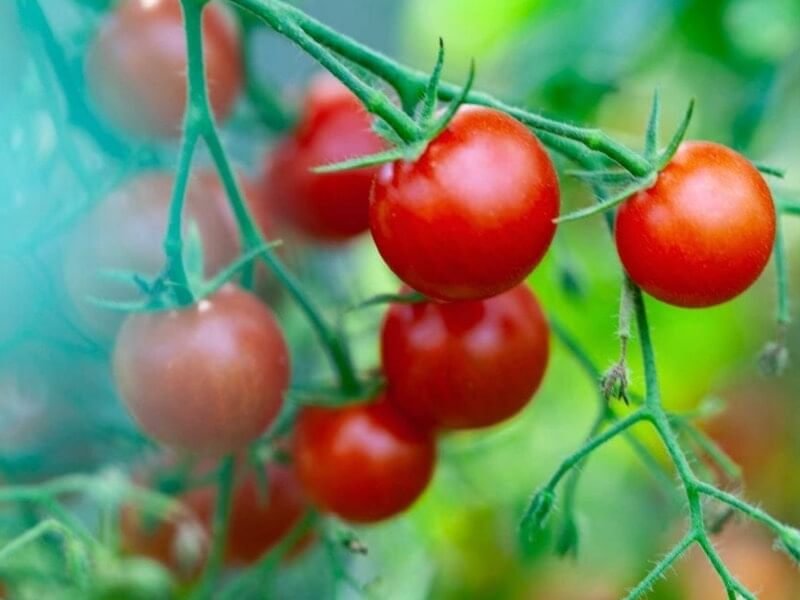
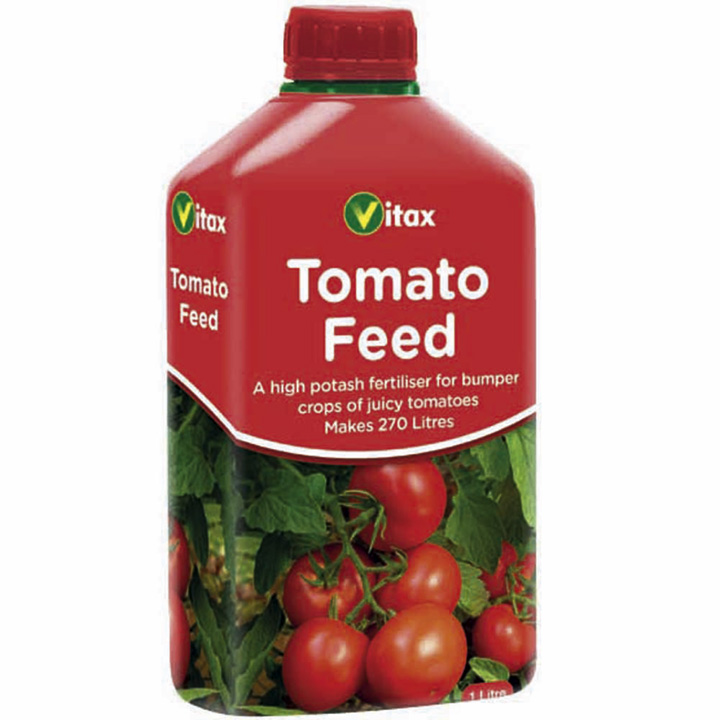
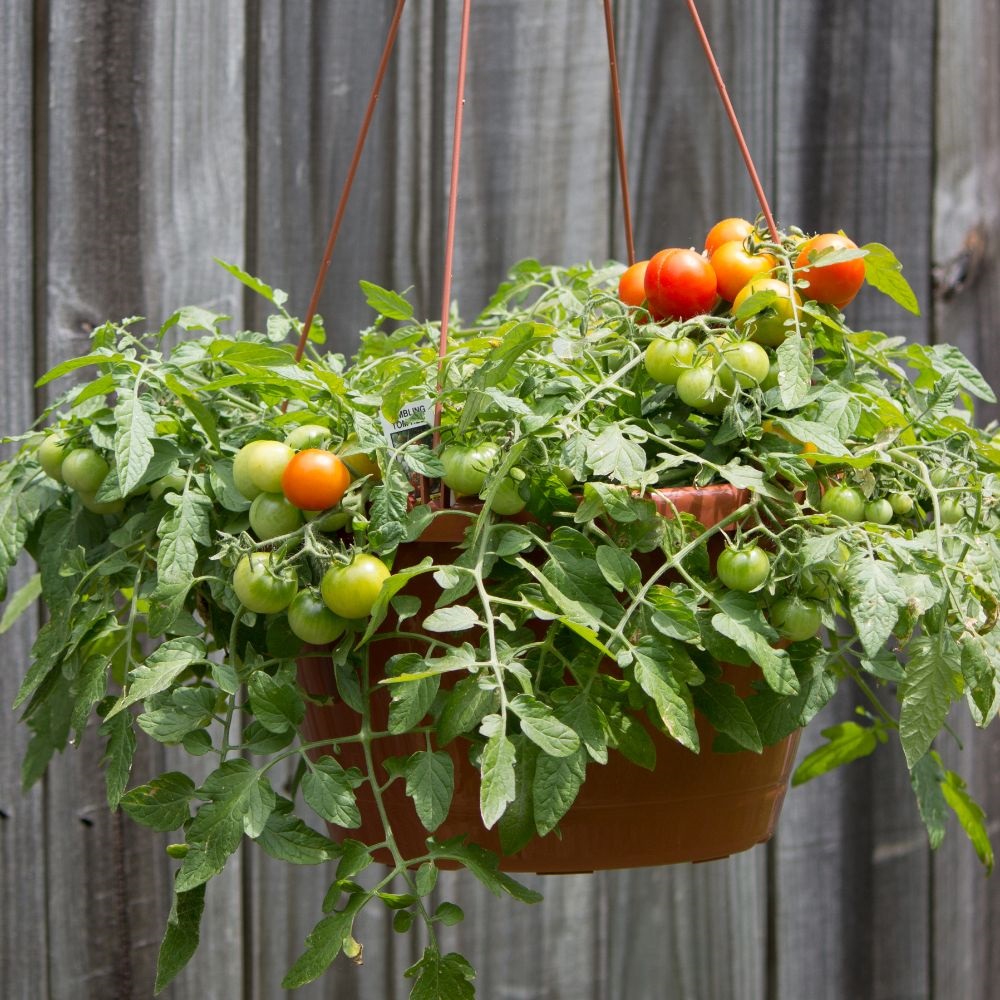
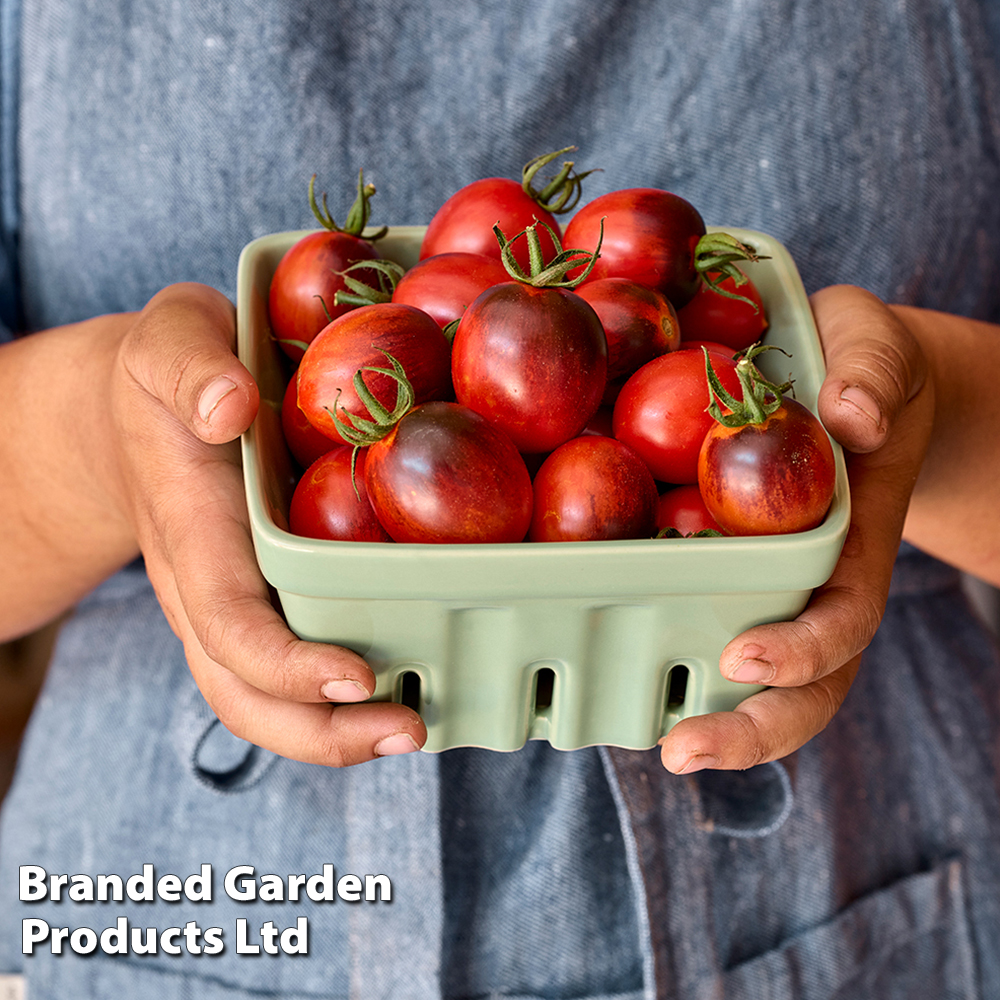
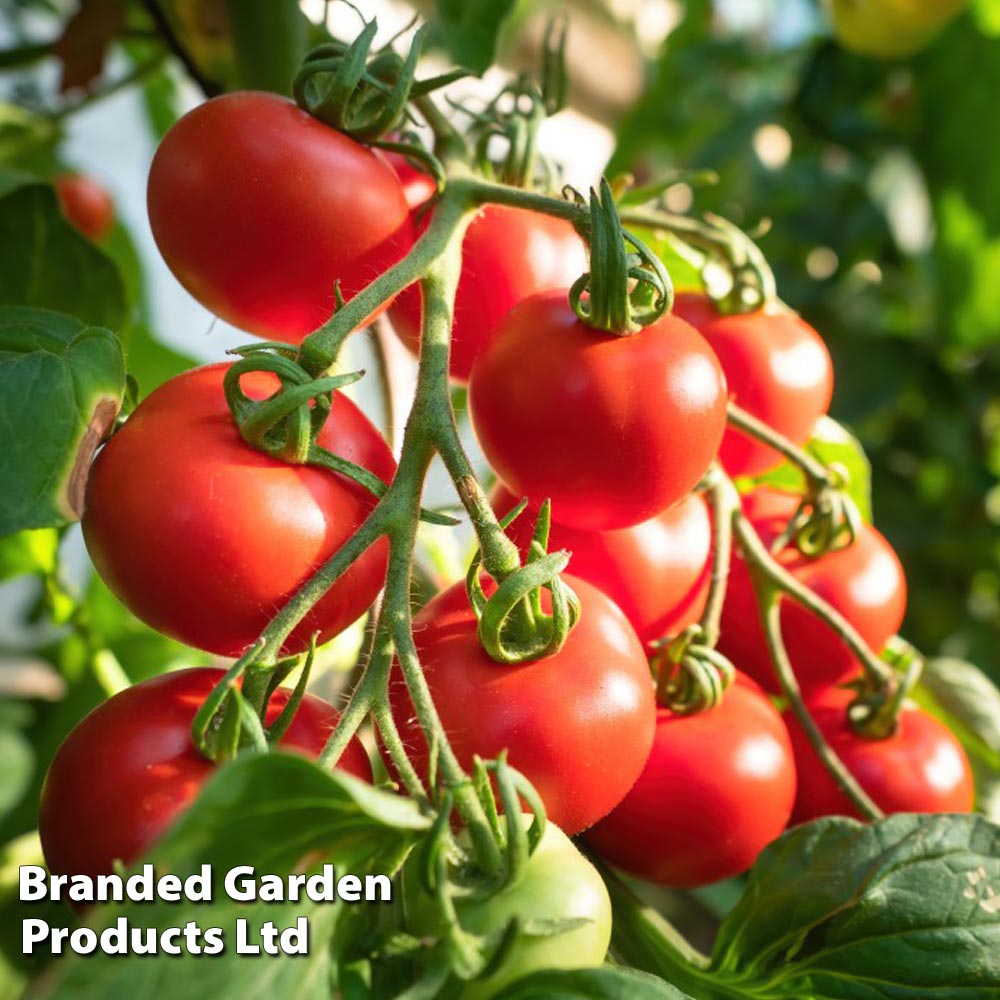
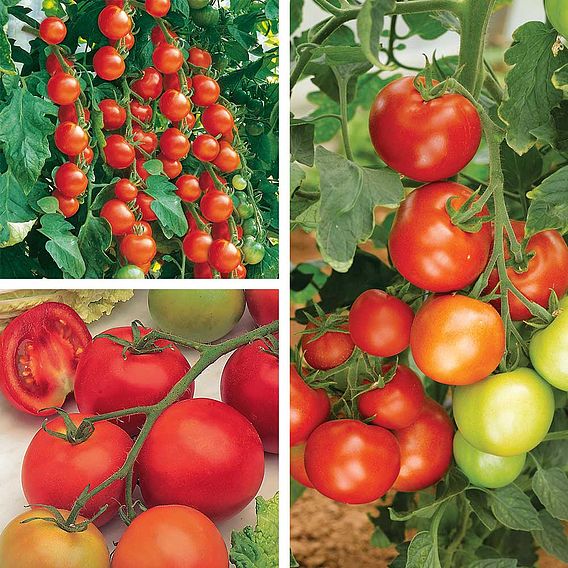
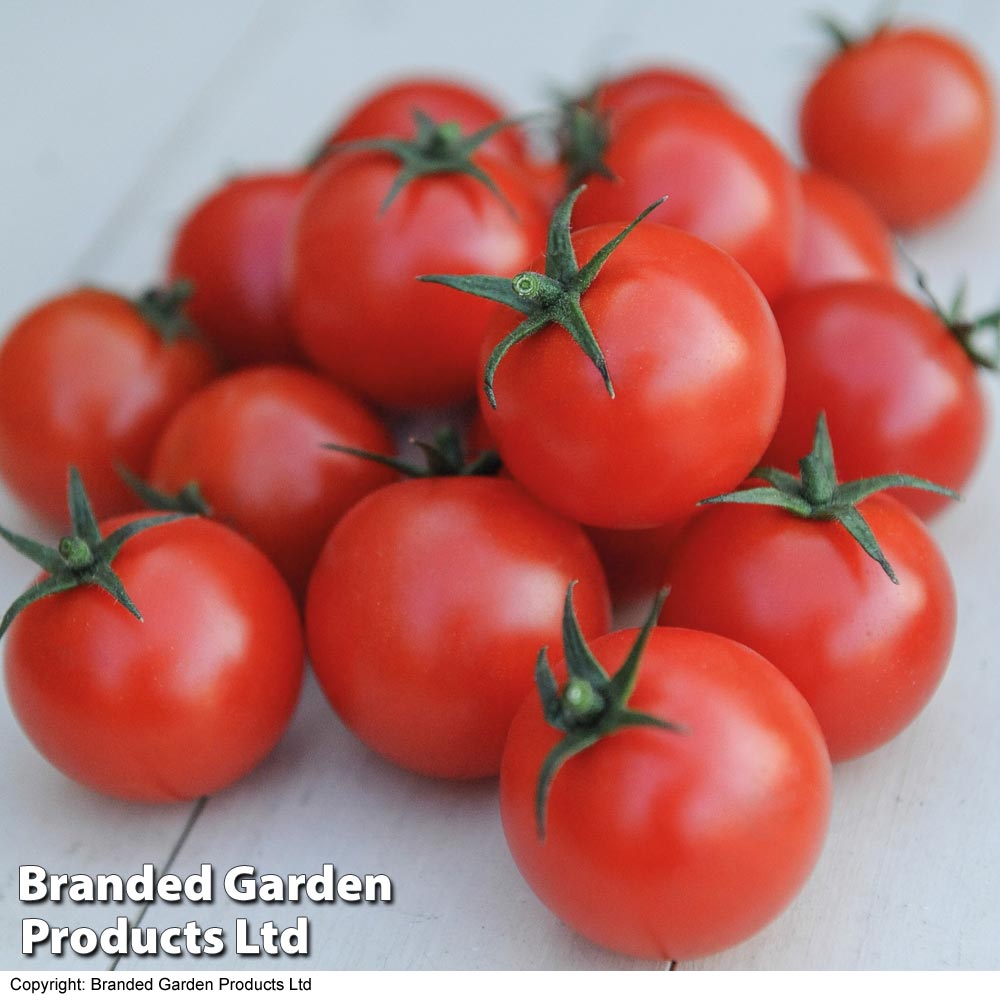
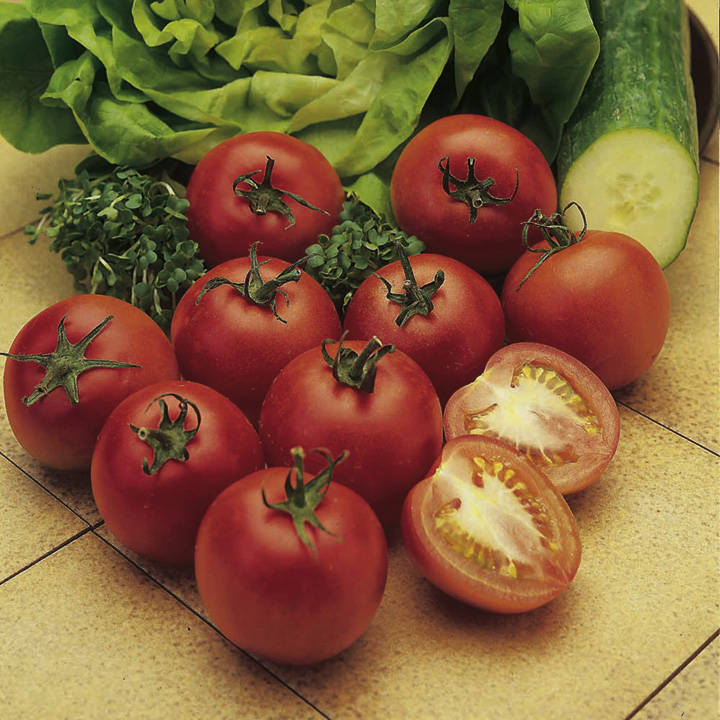
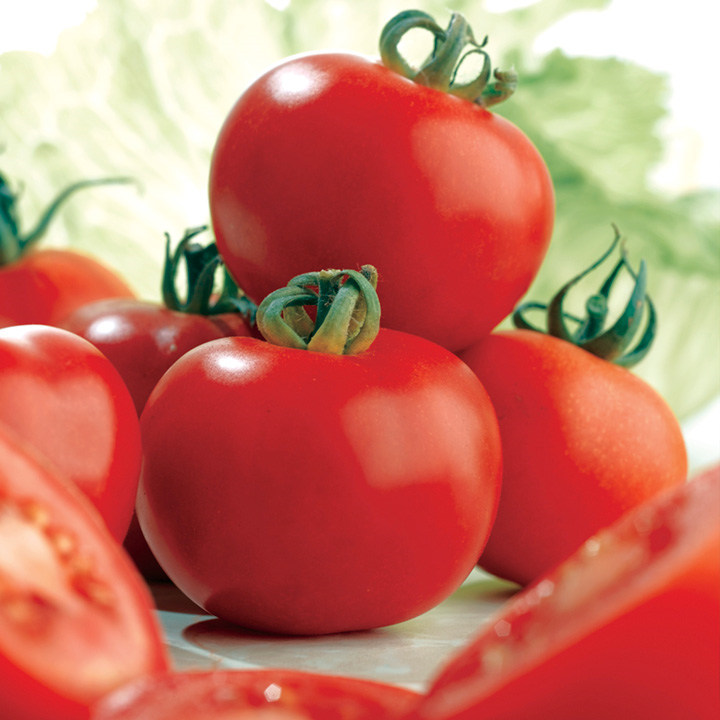
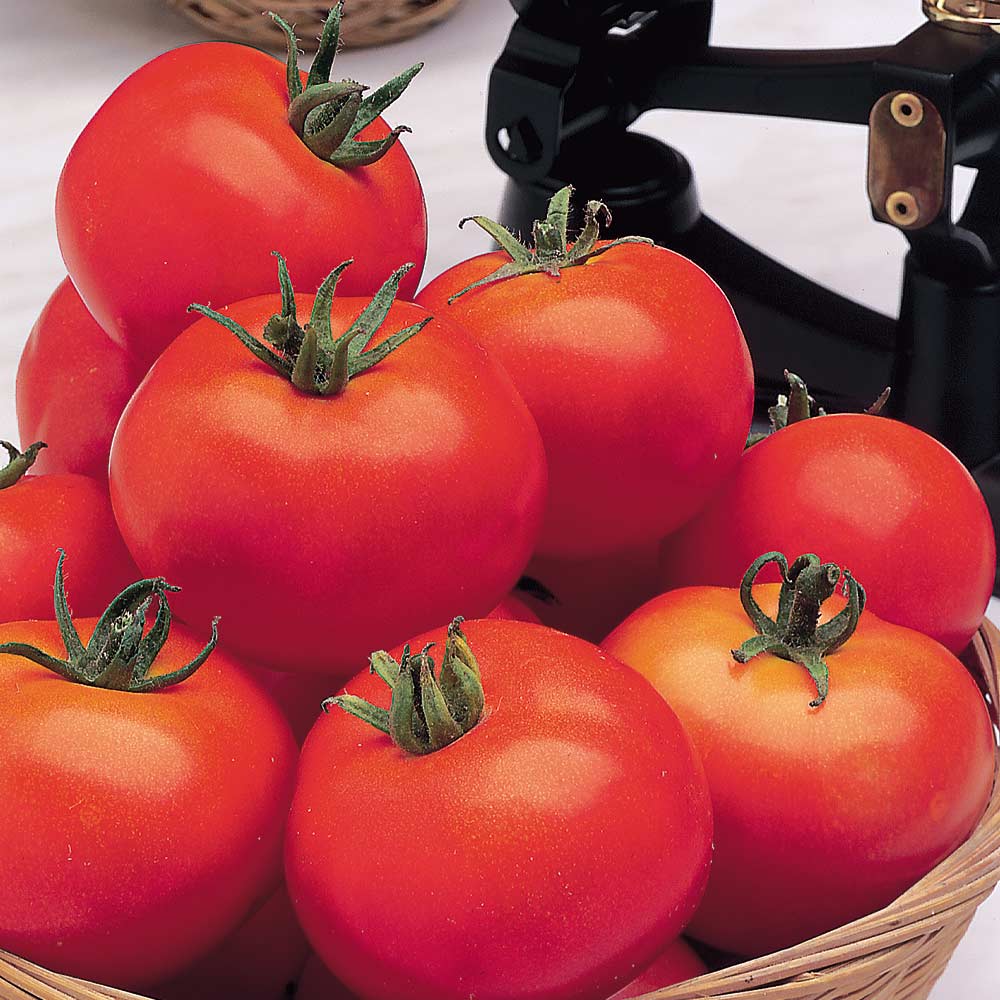
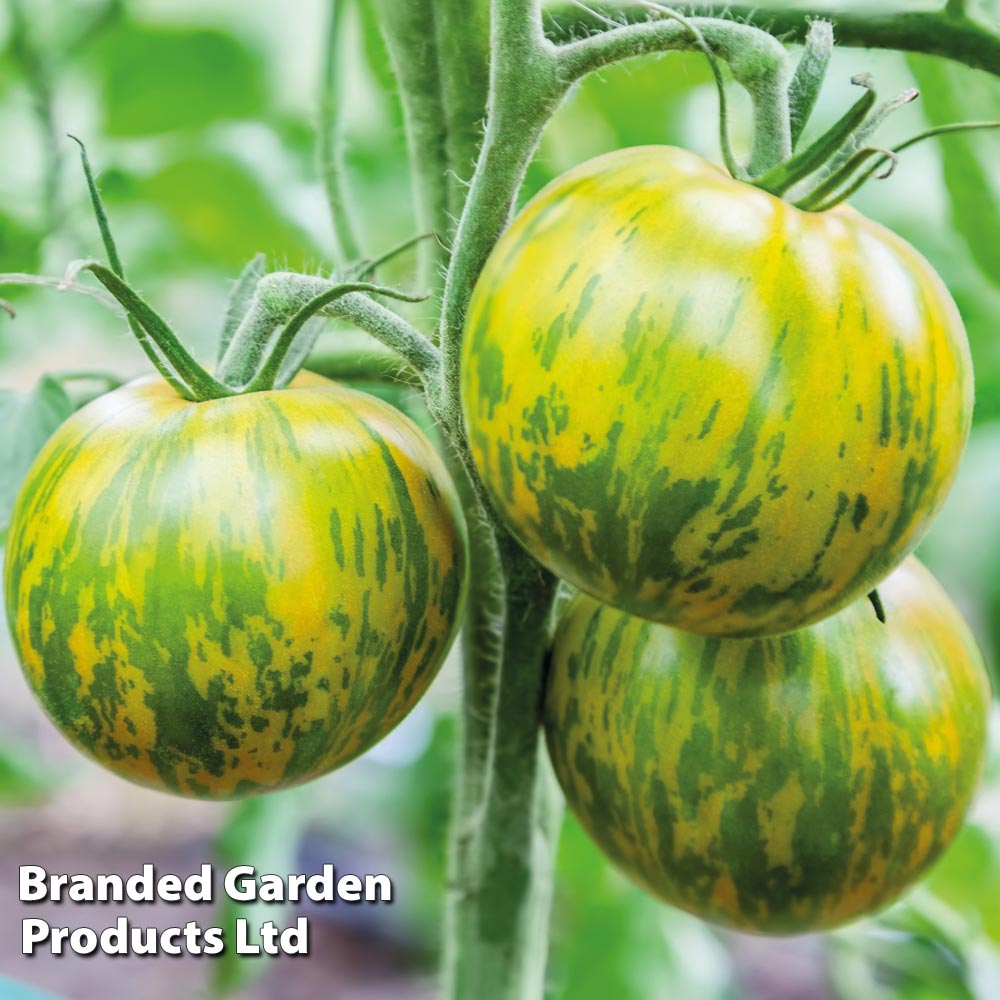
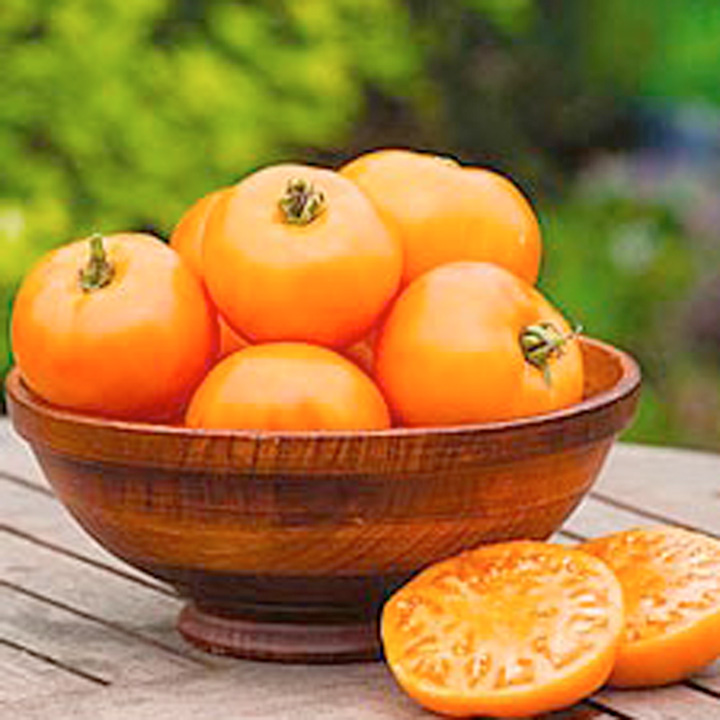
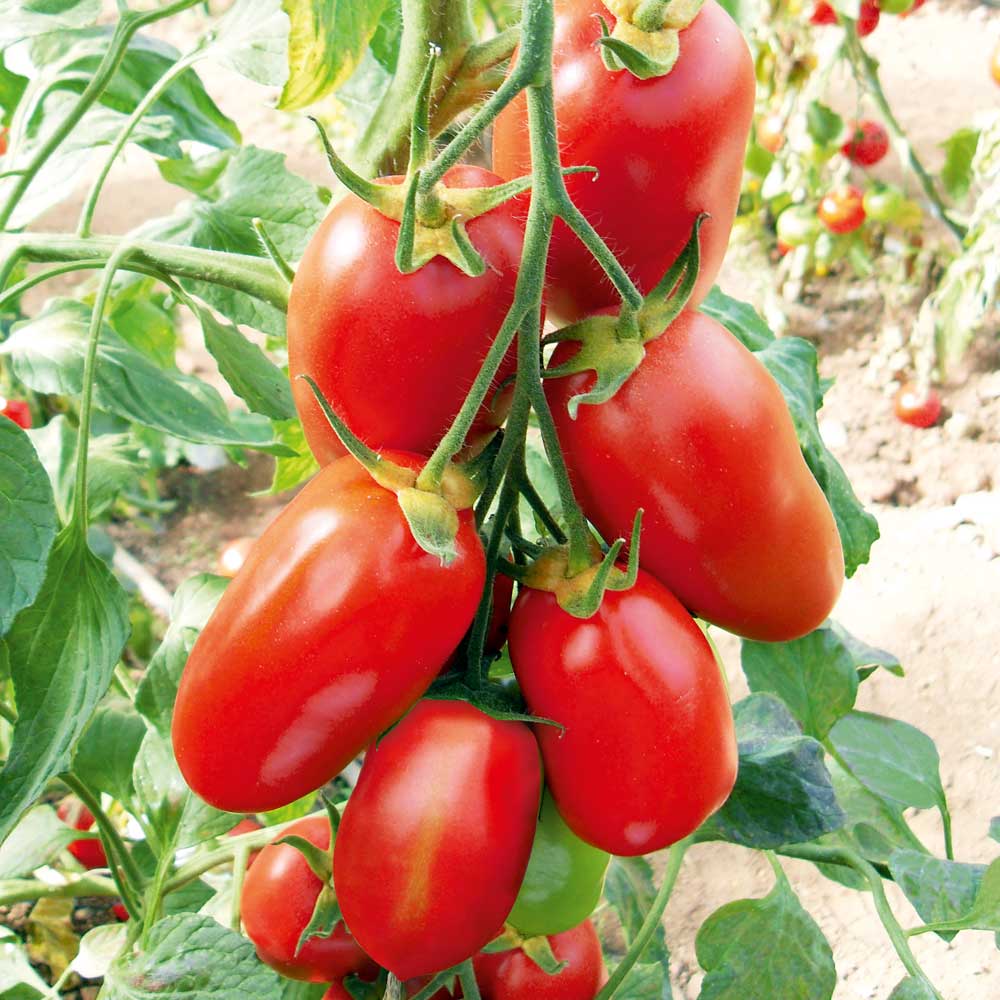
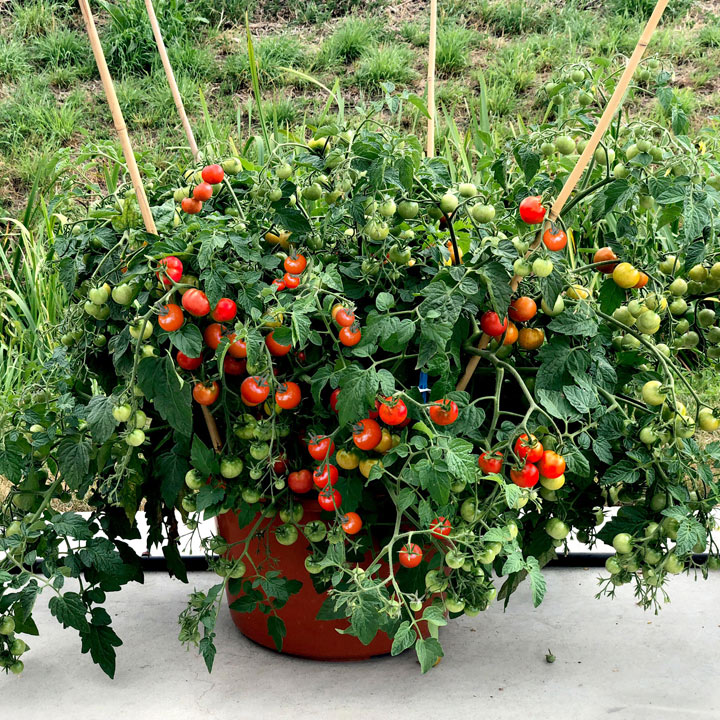
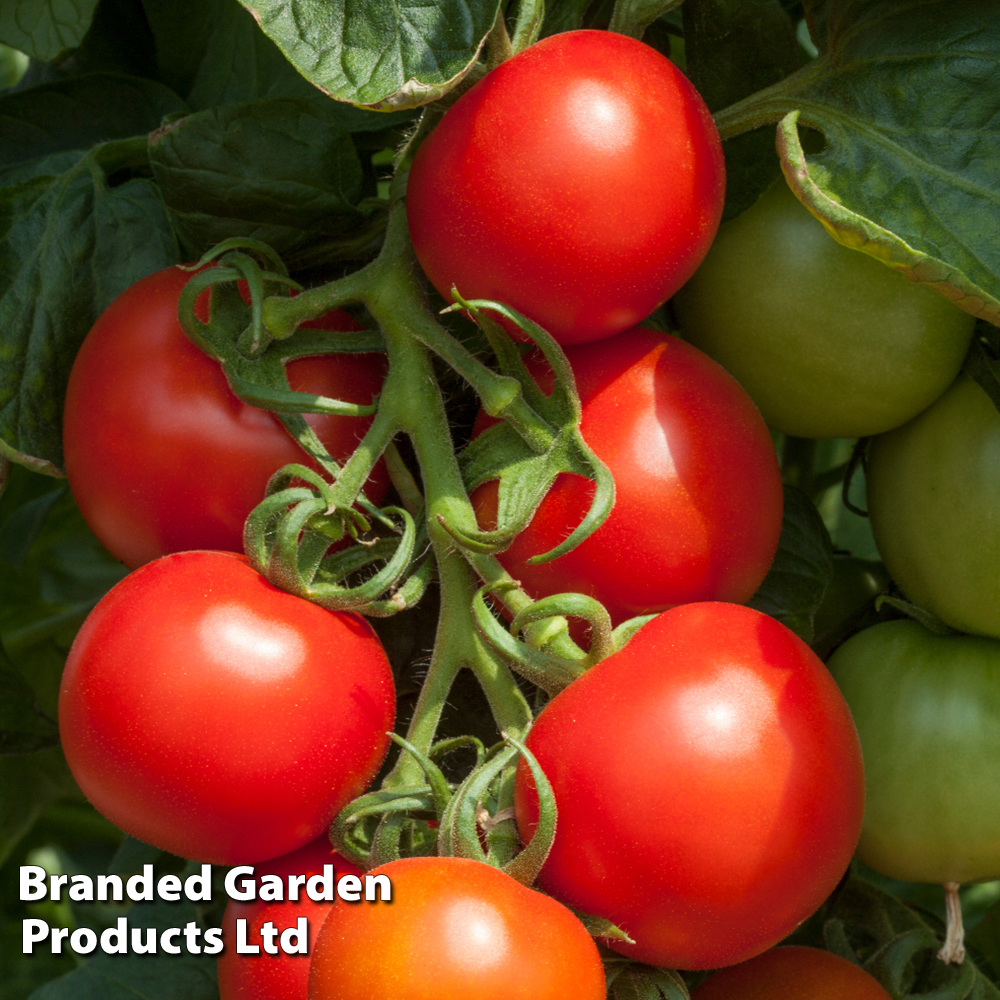
.jpg)










